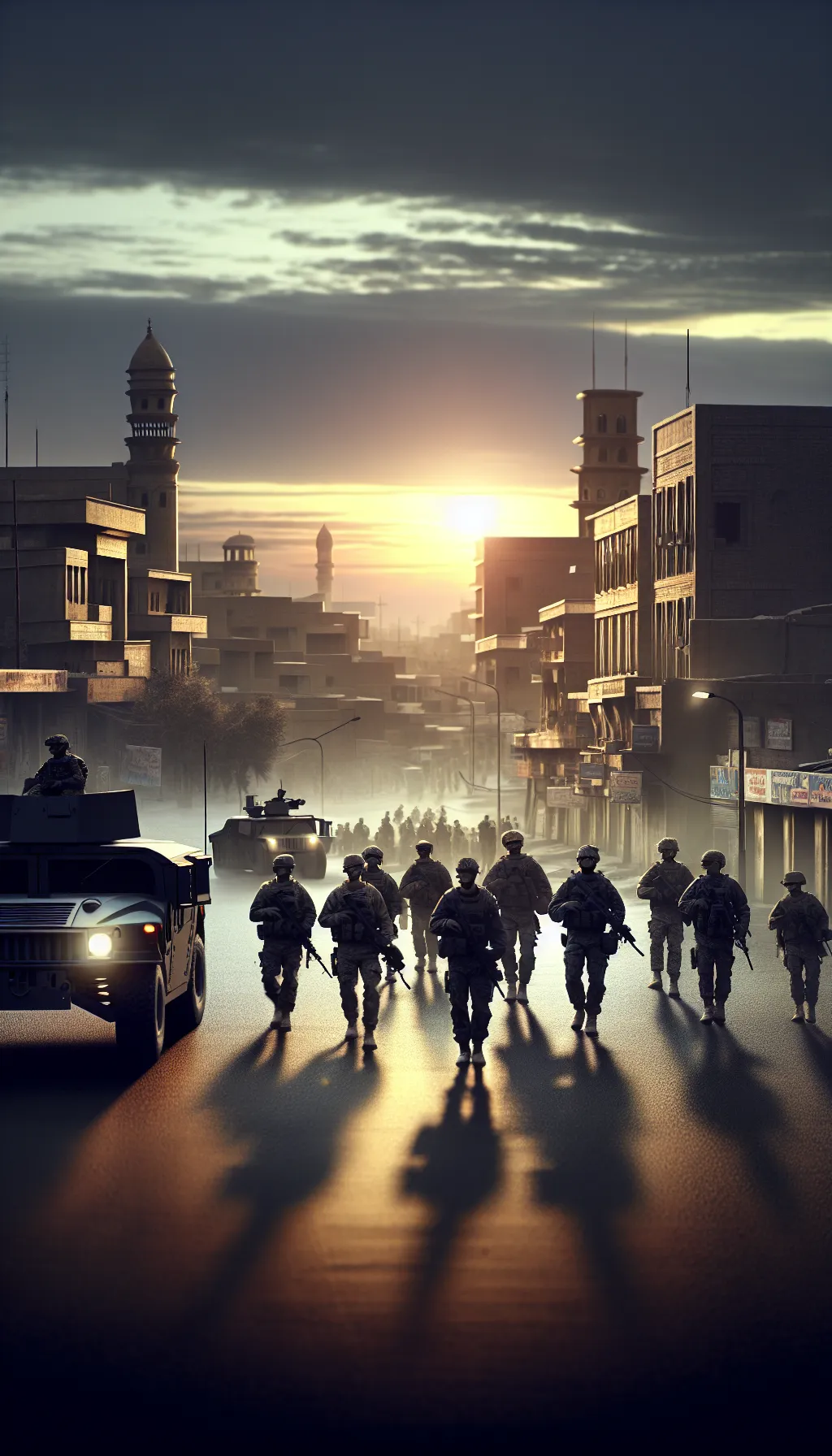Iraq – The Fall of Baghdad – April 9, 2003
TLDR;
- Event: On April 9, 2003, American forces entered Baghdad, marking the fall of Saddam Hussein’s regime after weeks of coalition advancement through Iraq.
- Symbolism: The toppling of Saddam’s statue became a debated symbol, representing liberation to some and the onset of turmoil to others.
- Aftermath: The swift victory led to a complex occupation, with decisions like disbanding the Iraqi army and de-Ba’athification policies contributing to prolonged instability.
- Legacy: The fall of Baghdad reshaped the Middle East, with its effects still evident today, highlighting the consequences of military intervention and poor post-war planning.
–
Story
The air was thick with tension as the sun rose over Baghdad on April 9, 2003. The city, once a symbol of Saddam Hussein’s iron-fisted rule, was on the brink of a seismic shift. American forces, including a small contingent of Marines and armored vehicles, made their way through the streets, their presence a harbinger of change that would echo across the globe.

For weeks, coalition forces had advanced through Iraq, their sights set on the capital. The regime’s grip was slipping, and the world watched as the inevitable unfolded. The fall of Baghdad was not just a military victory; it was the collapse of a regime that had ruled with fear and brutality for decades.
As American forces entered the city, the iconic image of a statue of Saddam being toppled, with some assistance from a Marine vehicle and a crowd that was not entirely spontaneous, became a symbol debated for its meaning—some saw it as liberation, while others later viewed it as the beginning of prolonged turmoil.
Yet, beneath the surface of celebration lay uncertainty and chaos. The swift military victory gave way to a complex occupation, exacerbated by poor planning such as the disbanding of the Iraqi army and de-Ba’athification policies, leading to instability that would test the resolve of the coalition and the Iraqi people.
The fall of Baghdad marked the end of an era, but it also opened a new chapter of instability and conflict. The chaos that followed was not solely due to a natural power vacuum but was also a direct consequence of U.S. decisions, reshaping the Middle East in ways that are still felt today.
–
| Would a different strategy have changed the course of the Iraq War? |